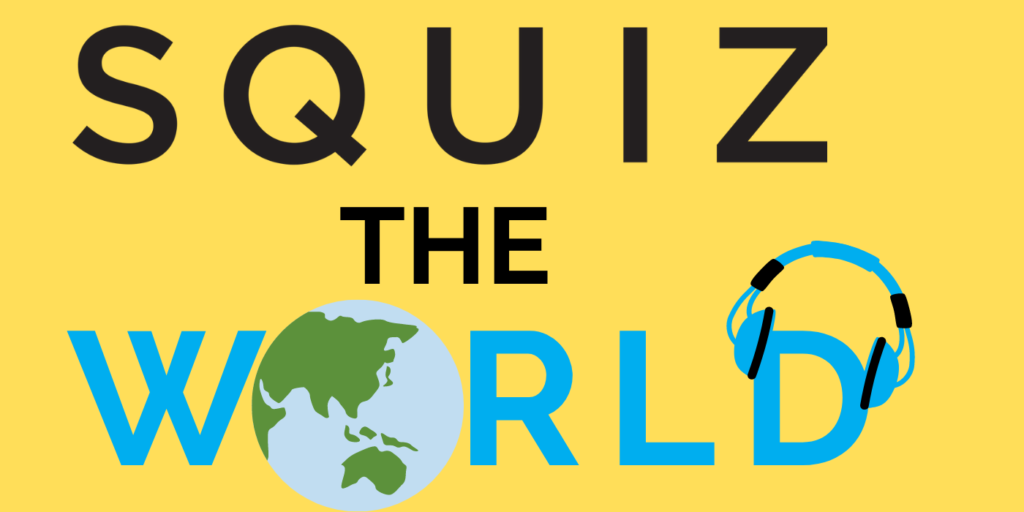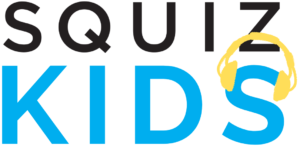
Squiz the World goes to… Peru
LINKS:
Machu Picchu 101: https://www.youtube.com/watch?v=cnMa-Sm9H4k
“Secrets of Machu Picchu”: https://www.nationalgeographic.com/travel/article/secrets?loggedin=true&rnd=1667798431314
Lomo saltado: https://www.eatperu.com/lomo-saltado-recipe/
Peruvian ceviche: https://www.eatperu.com/ceviche-recipe/
EPISODE TRANSCRIPT
Each week, we give the world globe a spin, and see where we land. Then we take the kids of Australia on an audio excursion to visit that country and its people.
I’m Amanda Bower, and today on Squiz the World we’re going to swim at Pacific Ocean beaches; beat our way through the tropical jungle to see the Amazon River; and hike the mountain peaks of the Andes… and to see all that, we won’t leave the borders of Peru!
So strap yourselves into the Squiz Kids Super Fast Supersonic Jetliner as we take off to South America, and take a squiz at Peru.
JUST THE FACTS
Peru is on the southwest coast of South America, and is that continent’s third biggest country. It’s what’s known as a presidential republic, meaning that it has an elected Parliament, and a separately elected President.
The capital, Lima, is on the coast, and is named after the river that runs through it, the Rimac. That’s a local indigenous word, and apparently, others had a hard time saying the “R” at the beginning and the “Q” at the end. So it went from Rimac to Lima. And yes, Lima beans – which in Australia tend to be called butter beans – are named after the Peruvian capital, because they were first cultivated – a fancy word for grown – in Peru.
You might be surprised to hear that potatoes and tomatoes spread across the world from Peru, too!
There are about 4,000 different species of potatoes grown in Peru, and it wasn’t until the 15th century that potatoes were brought from South America to Europe, and then beyond.
And all of the different kinds of tomatoes you can eat today descend from a tiny, berry-like tomato that grows wild in northern Peru.
Whenever you travel, it’s important to learn a few words in that country’s language. It’s a great way to show respect. So, let’s….
LEARN THE LINGO
Peru, along with most of South America, was conquered by the Spanish in the 1500s. Before the Spanish came, it was part of the enormous Inca Empire. More on the Incas in a minute.
So although the official language of Peru is Spanish, there are also two “co-official” languages, both of which are indigenous: the most widely spoken is Quechua, which was the main language of the Inca Empire. Because the Empire was so huge, Quechua is the most widely spoken “pre Columbian” language family in South America. Pre-Columbian means before the arrival of Christopher Columbus in the Americas in 1492.
Some say that the Quechua language was born from the musical sounds of nature, such as thunder, running water, wind, and birdcalls. How beautiful! About a quarter of all Peruvians speak Quechua, and I tried SOOO hard to find a Squiz Kid – or even the parent of a Squiz Kid – to record some for us. But so far, no luck. If you know someone, drop us a line at [email protected]
In the meantime, let’s remember our Spanish from Costa Rica, Mexico, and other places we’ve visited. We’ll say “hola” when we meet someone new, and “gracias” when they do something nice for us.
Now that we can communicate a little bit, it’s….
TIME FOR SCHOOL
Like many countries we’ve visited on the Squiz Kids Supersonic Jet, Peru has a big gap between its most wealthy people, and its poorest. Almost one third of Peruvians are considered to be living in poverty, and the story of President Pedro Castillo is still a common one. It’s hard for kids to get to school, their families often need them to help on a farm or earn money, and lots drop out.
And you can imagine what the global pandemic was like for kids living in the Peruvian countryside. While 60% of households in the capital, Lima, had access to a computer and the internet, in rural Peru, it was just 6%. As a result, large numbers of students have dropped out of school. The effects of that interrupted education could be felt for decades.
So, the next time you learn something on a computer, or take a short walk or bike ride to get home from school, think about how lucky you are!
Okay, I promised I’d tell you more about the Inca Empire, so let’s fire up the old time machine for…
TIME TRAVEL
We’re heading back to the 1500s… about the same time that the Spanish were landing on the coast of Peru. High up in the Andes mountains, the Incas were busy building something very special in the middle of their vast Empire, which stretched from Ecuador in the north, down to Chile in the south.
That’s right, we have landed in the city of Machu Picchu, where the Incas are building more than 200 stone structures on terraces cut into the mountainsides.
These palaces, temples and terraces are being built without wheeled vehicles to transport the stone… without metal tools to cut the stone… and without mortar to hole the stones together.
But the engineering is so precise that when there are earthquakes – and Machu Picchu lies on two fault lines, so there are plenty of earthquakes – we can see the stones “dance” around as the ground beneath them shakes, and then land and fit back together perfectly.
Because the Inca had no written language, there are no records of exactly what they used Machu Picchu for, and, crucially, no explanation for why, 100 years after it was built, they abandoned it.
The Spanish never discovered Machu Picchu, and it wasn’t until 1911 that an American explorer, Hiram Bingham, was shown the site by local farmers.
Machu Picchu is now world famous, and the government has limited the number of people allowed to visit to 2,500 per day, to help protect the site. I’ve put a link in your episode notes to photos and a video, so that you can get there virtually! But, as someone who has spent five days hiking in the mountains to get to Machu Picchu at sunrise, can I recommend that you put it on a mental list as something you might want to do when you’re a bit older. It’s breathtaking.
Okay, five days hiking, now I’m starving! I think it might be…
DINNER TIME
The national dish of Peru is ceviche… and most experts agree that it first appeared more than 2000 years ago, when the Moche culture – which was in Peru before the Incas – marinated fish in the fermented juices of a fruit called the Tumbo. Although scholars aren’t sure where the name comes from, one theory is that it comes from the Quechua name for fresh fish: “siwichi”. Sounds pretty convincing to me.
Nowadays, ceviche is made by marinated fish in lime juice, which denatures the raw fish proteins and essentially “cooks” it without using heat. It wasn’t until the Spanish brought citrus fruit with them to South America that this version was born. The fish and lime juice are mixed with spices, and served with lettuce, toasted corn, seaweed, and sweet potato.
Of course, fresh fish can be a little hard to come by in the mountains, so Peru’s second most popular dish is called “lomo saltado”. It’s beef, stir fried with onions, tomatoes, and chillis, and served with a mountain of rice. The word “saltado” literally means leap, or jump… which if you think about it, is just what the ingredients do when you’re tossing them around in a stir fry!
I’ll put a link in your episode notes to each recipe… you get to decide if you want to pretend you’re in Lima for dinner, having ceviche, or the mountains, having lomo saltado.
THE S’QUIZ
This is the part of the podcast where you get to test how well you’ve been listening.
Question 1. What was the name of the huge South American empire that stretched from Ecuador to Chile, and included all of Peru?
Question 2. Name one of the three foods I mentioned that were first grown in Peru, and spread across the world later? Question 3. Which ingredient did the Spanish conquerors bring with them, that is now an important part of Peru’s national dish, ceviche?
